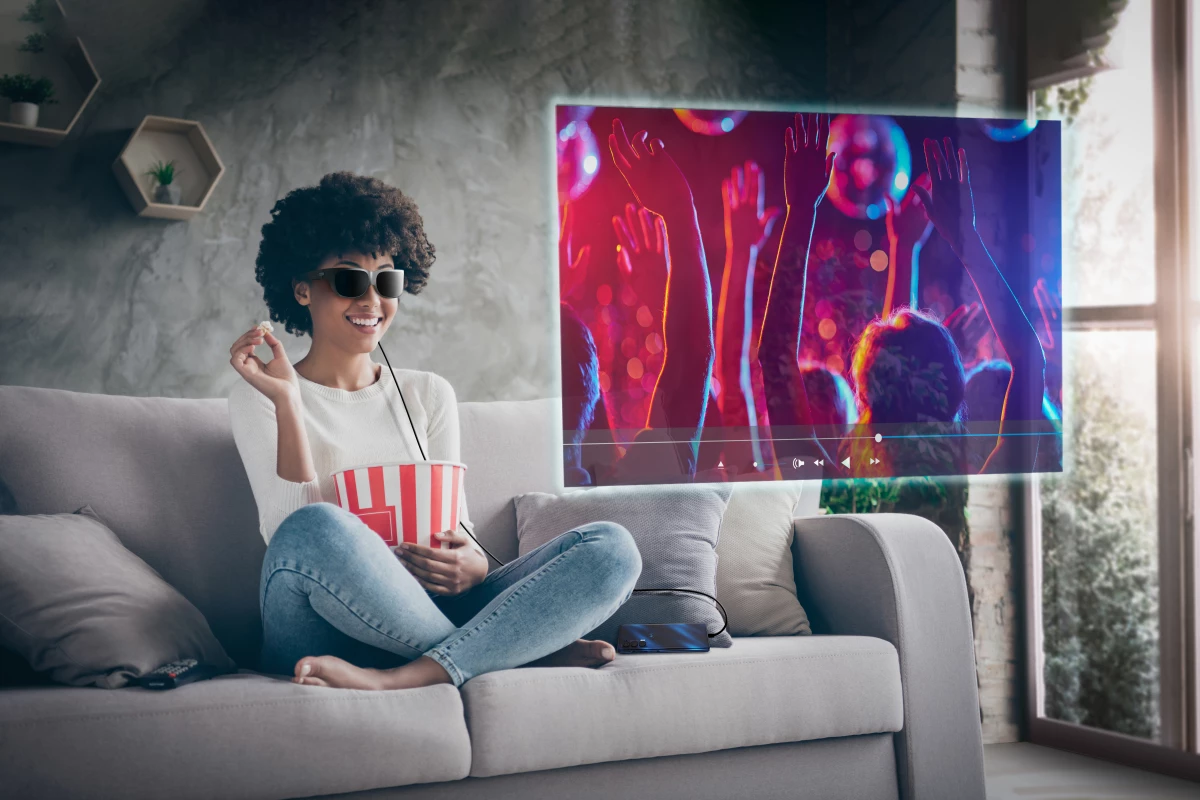Although companies keep trying to make the metaverse happen, most people would probably be happy with our own reality given a little augmentation. Lenovo has now announced a new wearable display called the Lenovo Glasses T1, which can connect to phones and computers to watch video, play games or work on a larger virtual screen.
They may conjure images of the long-defunct Google Glass, but the Lenovo Glasses T1 are quite different. The former was a pioneer in the augmented reality (AR) field, projecting a kind of head-up display (HUD) of context-specific information over the real world. The latter, meanwhile, is part of a growing class of devices that gives users the impression that they’re looking at a big screen, when in fact they’re just wearing some goofy glasses.
The idea is that you get a portable big screen experience for movies, TV shows, games, or work. You don’t have to squint at your phone to watch a movie on the train, or you can project a big second screen above your laptop while working in a cafe.
To that end, the Lenovo Glasses T1 pack a pair of Micro OLED displays with a Full HD resolution per eye, and a frame rate of 60 Hz. They can display content from phones, laptops, PCs or other Windows, Android or MacOS devices that output through a USB Type-C cable. As is often the case, iPhone users will have an extra hoop to jump through, requiring not one but two separate adapters to convert the signal from Lightning to HDMI then to USB-C.
Strangely enough, there’s no mention of whether the glasses have a headphone jack or Bluetooth audio connectivity. It seems like a no-brainer to include at least one of those, but the only audio output Lenovo mentions is the built-in speakers, meaning you’d end up being that annoying person on the train blasting sound for all to hear.
Lenovo also says the Lenovo Glasses T1 have a low overall power consumption, but doesn’t go into specifics. The glasses have their own built-in battery but can also leech power off whatever device they’re plugged into, with the battery life described as “up to hours,” which doesn’t bode well.
Still, these are among the most stylish of virtual screen wearables we’ve seen so far, looking closer to regular sunglasses and less like a VISOR from Star Trek. For comfort’s sake, they’ve even got swappable nose clips, adjustable arms and a frame that can hold prescription lenses.
Lenovo hasn’t announced pricing for the Lenovo Glasses T1 just yet, but for comparison’s sake the company’s existing, work-focused ThinkReality A3 Smart Glasses currently go for US$1,500. And they have a lot more AR tech crammed in there.
The Lenovo Glasses T1 will be released in China in late 2022, with the rest of the world following next year.
Source: Lenovo




